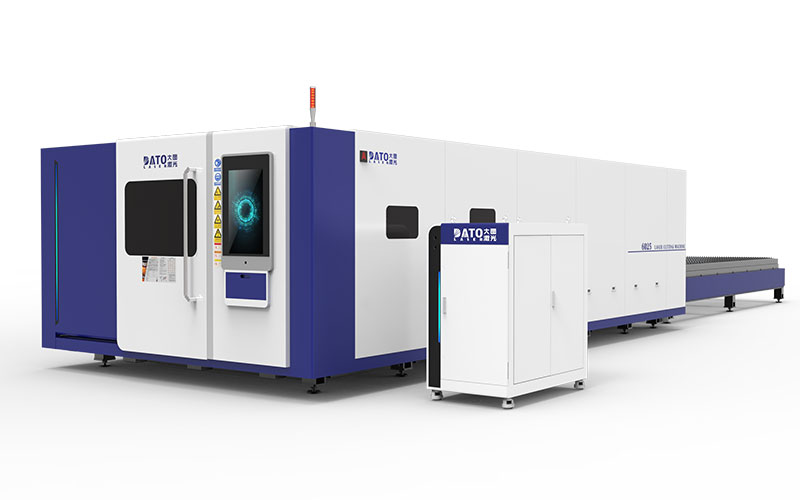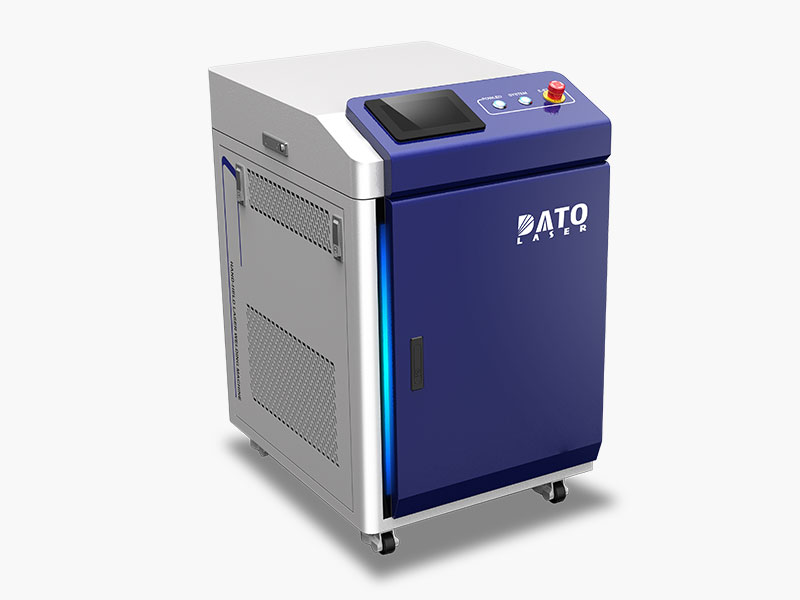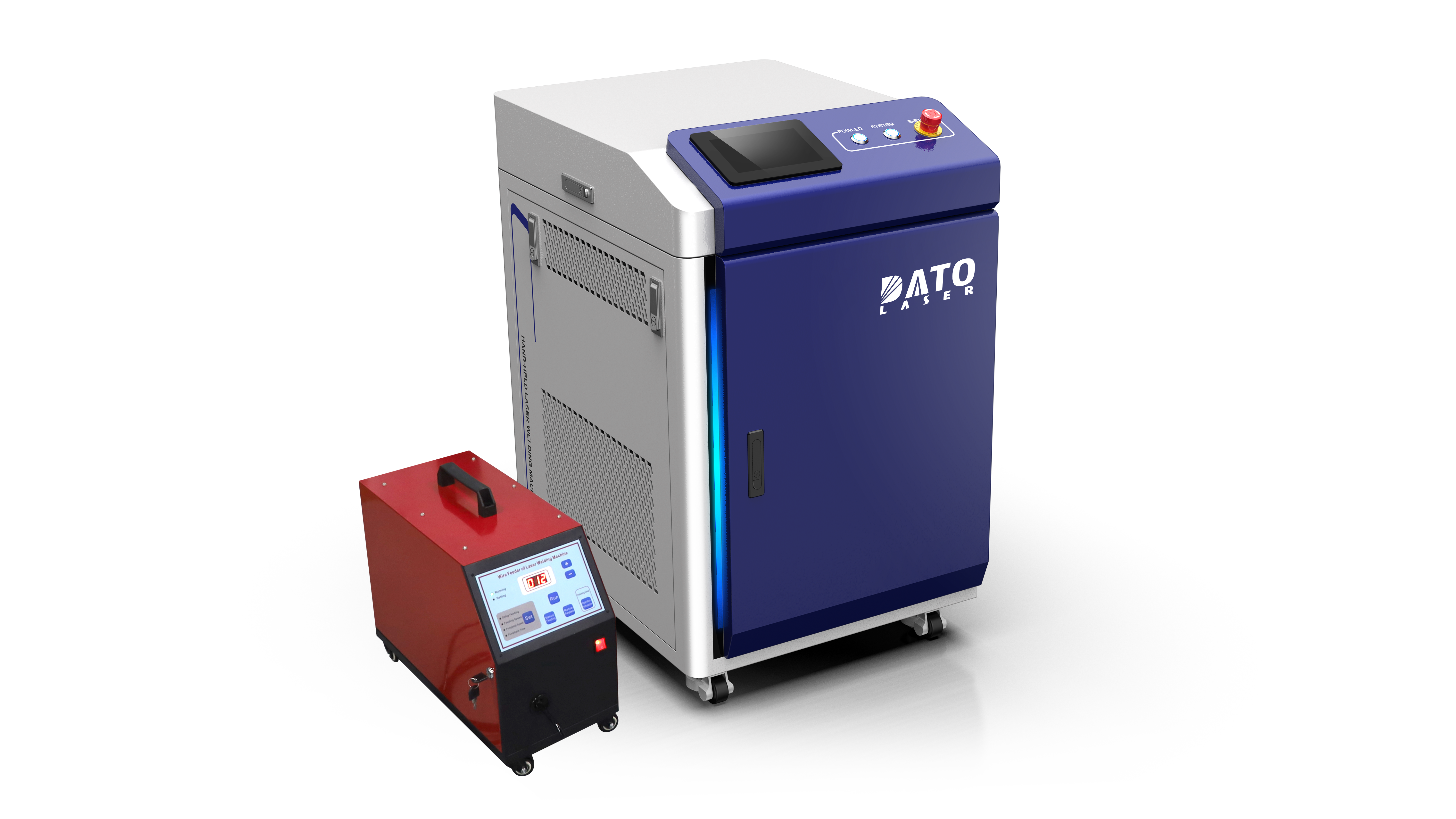Can a Laser Cutting Machine Cut Metal? Comprehensive Guide to Metal Laser Cutting

Introduction to Laser Cutting Technology for Metal
Yes, laser cutting machines can indeed cut metal, and they do so with remarkable precision and efficiency. In the modern manufacturing landscape, laser cutting has revolutionized how we approach metal fabrication. At DATO and Leapion, we've witnessed firsthand the transformative impact of laser technology on metal processing since our founding in 2007. Laser cutting represents one of the most significant advancements in industrial manufacturing, offering unparalleled accuracy, speed, and versatility when working with various metal materials.
Laser cutting uses a focused, high-powered beam to melt, burn, or vaporize material—in this case, metal—creating precise cuts with minimal material waste. This technology has become indispensable across industries ranging from automotive manufacturing to aerospace, construction, and even artistic metalwork. The ability to cut metal with lasers has dramatically reduced production times while simultaneously improving quality and consistency.
Types of Laser Cutting Machines for Metal Processing
Fiber Laser Cutting Machines
Fiber laser cutting machines represent the cutting edge of metal processing technology. These systems utilize a solid-state laser that generates a beam through optical fibers doped with rare earth elements like ytterbium. At DATO and Leapion, our fiber laser cutting machines have become our flagship products due to their exceptional performance characteristics.
Fiber lasers excel at cutting reflective metals like aluminum, copper, and brass—materials that traditionally posed challenges for other laser types. With wavelengths typically around 1064 nanometers, fiber lasers deliver their energy with remarkable efficiency, allowing for faster cutting speeds and lower operating costs compared to alternative technologies.
The advantages of fiber laser cutting include:
Superior cutting speeds (up to 5 times faster than CO2 lasers for thin materials)
Lower maintenance requirements with fewer moving parts
Greater energy efficiency, reducing operational costs
Exceptional beam quality for precise, clean cuts
Ability to cut highly reflective materials safely
CO2 Laser Cutting Machines
While less common for modern metal cutting applications, CO2 laser systems still maintain relevance in specific metal fabrication scenarios. These lasers generate their beam by electrically stimulating a gas mixture predominantly containing carbon dioxide.
CO2 lasers operate at a wavelength of approximately 10,600 nanometers, making them less ideal for reflective metals but still effective for cutting carbon steel, stainless steel, and other non-reflective metals. They remain particularly valuable when working with thicker metal sheets where their characteristics can be advantageous.
Nd:YAG Laser Cutting Machines
Neodymium-doped yttrium aluminum garnet (Nd:YAG) lasers represent an older technology that preceded fiber lasers but offered similar wavelength characteristics. Operating at 1064 nanometers, these solid-state lasers can effectively cut various metals, though they've largely been superseded by fiber laser technology due to efficiency considerations.
Metal Materials Compatible with Laser Cutting
Carbon Steel Laser Cutting
Carbon steel represents one of the most commonly processed materials in laser cutting operations. The high carbon content makes this material particularly responsive to laser energy, allowing for clean, precise cuts across various thicknesses. Our fiber laser cutting machines at DATO and Leapion can efficiently process carbon steel from thin gauge sheets to plates exceeding 25mm in thickness, depending on the power configuration.
The oxide layer that forms during carbon steel laser cutting actually assists the process by absorbing laser energy more efficiently, contributing to faster cutting speeds compared to some other metals. This makes carbon steel laser cutting particularly cost-effective for high-volume production environments.
Stainless Steel Laser Cutting
Stainless steel presents unique challenges and opportunities in laser cutting applications. The chromium content that gives stainless steel its corrosion resistance also affects how it interacts with laser energy. Our fiber laser systems excel at cutting stainless steel with minimal heat-affected zones, preserving the material's corrosion-resistant properties even at the cut edges.
Stainless steel laser cutting typically requires higher power densities compared to carbon steel, but modern fiber lasers handle this requirement efficiently. The result is exceptionally clean cuts with minimal dross (molten material adhering to the bottom edge), reducing or eliminating the need for secondary finishing operations.
Aluminum Laser Cutting
Aluminum's high reflectivity and thermal conductivity historically made it challenging for laser cutting operations. However, fiber laser technology has overcome these limitations, enabling efficient aluminum processing. The shorter wavelength of fiber lasers is more readily absorbed by aluminum, allowing for effective cutting despite the material's reflective properties.
Our specialized aluminum cutting parameters ensure optimal results across various alloys and thicknesses. From thin aluminum sheets used in electronics to thicker structural components, laser cutting provides the precision needed for demanding applications.
Copper and Brass Laser Cutting
Highly reflective metals like copper and brass once represented significant challenges for laser cutting technology. Traditional CO2 lasers struggled with these materials due to their reflectivity at the 10,600nm wavelength. Fiber lasers, operating at 1064nm, have dramatically improved the feasibility of cutting these valuable metals.
At DATO and Leapion, our high-powered fiber laser systems can effectively process copper and brass components for electrical applications, plumbing fixtures, decorative elements, and more. The precision achieved with laser cutting eliminates many of the limitations associated with traditional copper and brass fabrication methods.

Laser Cutting Thickness Capabilities for Different Metals
Thin Metal Sheet Cutting (0.5mm-3mm)
Laser cutting truly excels when processing thin metal sheets. In this thickness range, our fiber laser systems achieve remarkable cutting speeds while maintaining exceptional edge quality. For materials between 0.5mm and 3mm, cutting speeds can reach several meters per minute, making laser technology ideal for high-volume production of components from sheet metal.
The precision achieved in thin metal cutting enables intricate designs with minimal kerf width (the width of material removed during cutting). This capability supports applications requiring complex geometries and tight tolerances, such as electronics enclosures, precision components, and decorative elements.
Medium Thickness Metal Cutting (3mm-10mm)
As material thickness increases to the medium range of 3mm to 10mm, laser cutting continues to offer significant advantages over alternative cutting methods. While cutting speeds decrease compared to thinner materials, the precision, edge quality, and automation capabilities remain superior to mechanical cutting processes.
Our fiber laser systems optimize parameters automatically based on material type and thickness, ensuring consistent results across production runs. This thickness range encompasses many common applications in structural components, machinery parts, and automotive components.
Thick Metal Plate Cutting (10mm-25mm+)
High-powered fiber laser systems have expanded the practical thickness range for laser cutting operations. Modern machines can effectively cut steel exceeding 25mm in thickness, though cutting speeds decrease significantly as thickness increases. For these applications, the laser power requirements increase substantially, with systems often utilizing 6kW, 8kW, or even 12kW lasers.
Even at these greater thicknesses, laser cutting maintains advantages in terms of precision, minimal material distortion, and the ability to cut complex shapes that would be challenging or impossible with alternative methods. The economic viability of laser cutting thick plates depends on production volume, complexity of parts, and specific application requirements.
Advantages of Laser Cutting for Metal Fabrication
Precision and Accuracy in Metal Cutting
Laser cutting delivers exceptional dimensional accuracy, with typical tolerances of ±0.1mm or better depending on material type and thickness. This precision results from the focused nature of the laser beam, sophisticated motion control systems, and advanced cutting head technologies that maintain consistent focal distance throughout the cutting process.
The precision achieved with laser cutting reduces or eliminates the need for secondary operations, streamlining production workflows and reducing overall manufacturing costs. Components cut with laser technology can often be used directly in assembly operations without additional processing.
Speed and Efficiency in Production
The speed advantages of laser cutting become particularly evident in production environments. Automated material handling, rapid positioning systems, and optimized cutting parameters contribute to high throughput rates that outperform traditional cutting methods. Our fiber laser systems can transition between different cut profiles instantaneously, eliminating the tool changes required with mechanical cutting processes.
The efficiency extends beyond cutting speed to include reduced setup times, minimal material waste through optimized nesting, and lower labor requirements through automation. These factors combine to make laser cutting an economically advantageous choice for metal fabrication operations.
Complex Designs and Intricate Cuts
Perhaps the most compelling advantage of laser cutting is the ability to produce complex geometries that would be impractical or impossible with mechanical cutting methods. The non-contact nature of laser processing means that delicate or intricate designs can be cut without the material distortion associated with mechanical forces.
This capability enables designers to explore new possibilities in product design, architectural elements, and artistic expressions. From complex ventilation patterns to decorative screens with intricate details, laser cutting expands the boundaries of what's possible in metal fabrication.
Applications of Metal Laser Cutting Across Industries
Automotive Manufacturing
The automotive industry has embraced laser cutting technology for its precision, speed, and flexibility. Components ranging from body panels and structural elements to intricate brackets and interior parts are routinely produced using laser cutting systems. The ability to quickly adapt to design changes without expensive tooling modifications makes laser cutting particularly valuable in this rapidly evolving industry.
Advanced driver assistance systems and electric vehicle components often require precise metal parts with complex geometries—applications where laser cutting demonstrates clear advantages over alternative manufacturing methods.
Aerospace and Aviation
In aerospace applications, where material performance and weight considerations are critical, laser cutting provides the precision needed for components that must meet stringent specifications. The minimal heat-affected zone of fiber laser cutting helps preserve material properties, an essential consideration for parts subjected to extreme conditions.
From engine components to structural elements and interior fittings, laser cutting supports the aerospace industry's demands for exceptional quality, repeatability, and traceability throughout the manufacturing process.
Construction and Architectural Elements
The construction industry utilizes laser-cut metal components for both structural and decorative applications. Precision-cut connection plates, custom brackets, and building system components benefit from the dimensional accuracy of laser cutting, ensuring proper fit during assembly.
Architecturally, laser-cut metal panels, screens, and decorative elements add distinctive visual interest to buildings while meeting functional requirements for durability, weather resistance, and safety. The design freedom afforded by laser cutting allows architects to realize unique visions that would be impractical with traditional fabrication methods.
Considerations When Choosing a Metal Laser Cutting Machine
Power Requirements for Different Metal Types
The laser power required depends primarily on the type and thickness of metal being processed. For thin sheet metal applications under 3mm, systems with 1-2kW may be sufficient. Medium-range applications typically require 3-4kW, while thick plate cutting may necessitate 6kW or higher.
Material type also influences power requirements—stainless steel and aluminum generally require more power than mild steel of equivalent thickness due to their reflective and thermal properties. Our application engineers at DATO and Leapion can help determine the optimal power configuration based on specific production requirements.
Maintenance and Operational Costs
While laser cutting systems represent a significant capital investment, the operational economics often justify the expenditure. Fiber laser systems in particular offer advantages in terms of maintenance requirements and energy efficiency. With no laser gases to replace and fewer consumable parts compared to CO2 systems, fiber lasers typically demonstrate lower operating costs over their service life.
Preventive maintenance schedules, operator training, and proper system care all contribute to maximizing uptime and extending equipment lifespan. Our service teams provide comprehensive support to ensure optimal performance throughout the machine's operational life.
Integration with Production Workflows
Modern laser cutting systems can integrate seamlessly with broader production ecosystems through industry-standard interfaces and protocols. From CAD/CAM software integration to material handling automation and ERP system connectivity, today's laser cutting machines function as nodes in connected manufacturing environments.
At DATO and Leapion, we design our systems with this integration capability in mind, ensuring that our laser cutting solutions enhance overall production efficiency rather than creating workflow bottlenecks.

Conclusion: The Future of Metal Laser Cutting Technology
Laser cutting technology continues to evolve, with ongoing advancements in beam quality, power levels, automation capabilities, and intelligent control systems. As a leader in the fiber laser cutting industry since 2007, DATO and Leapion remain committed to advancing these technologies and bringing their benefits to manufacturers worldwide.
The ability of laser cutting machines to process metal with unprecedented precision, speed, and design flexibility has transformed manufacturing across industries. As materials science advances and laser technology continues to develop, we anticipate even greater capabilities in the future—from faster processing speeds to expanded material compatibility and enhanced integration with digital manufacturing ecosystems.
For manufacturers considering laser cutting technology for metal processing applications, the question is no longer whether laser cutting can process metal, but rather which laser cutting solution best meets their specific production requirements. With proper system selection, training, and support, laser cutting technology delivers transformative benefits for metal fabrication operations of all sizes.
Related Blogs
-
 Exploring the Safety, Precision, and Industrial Benefits of Laser Surface CleaningIn today’s fast-paced industrial world, where quality, efficiency, and sustainability are top priorities, manufacturers are constantly seeking better ways to clean metal surfaces without compromising material integrityBlog
Exploring the Safety, Precision, and Industrial Benefits of Laser Surface CleaningIn today’s fast-paced industrial world, where quality, efficiency, and sustainability are top priorities, manufacturers are constantly seeking better ways to clean metal surfaces without compromising material integrityBlog -
 A Complete Guide by DATO and LeapionIn modern industry, surface preparation and maintenance play a crucial role in achieving high-quality manufacturing results. Laser cleaning machines have emerged as one of the most innovative, efficient, and environmentally friendly tools for removing contaminantsBlog
A Complete Guide by DATO and LeapionIn modern industry, surface preparation and maintenance play a crucial role in achieving high-quality manufacturing results. Laser cleaning machines have emerged as one of the most innovative, efficient, and environmentally friendly tools for removing contaminantsBlog -
 Laser cleaning machines are revolutionizing industrial surface cleaning by offering a faster, safer, and more eco-friendly alternative to traditional methods. Whether removing rust, paint, oil, oxide, or other surface contaminants, laser cleaning has become a cutting-edge solution in manufacturing,Blog
Laser cleaning machines are revolutionizing industrial surface cleaning by offering a faster, safer, and more eco-friendly alternative to traditional methods. Whether removing rust, paint, oil, oxide, or other surface contaminants, laser cleaning has become a cutting-edge solution in manufacturing,Blog -
 Introduction: Transforming EV Battery Manufacturing Through Laser TechnologyThe electric vehicle revolution has accelerated dramatically over the past decade, bringing with it unprecedented challenges and opportunities in battery manufacturing. As global automakers commit billions to electrificationBlog
Introduction: Transforming EV Battery Manufacturing Through Laser TechnologyThe electric vehicle revolution has accelerated dramatically over the past decade, bringing with it unprecedented challenges and opportunities in battery manufacturing. As global automakers commit billions to electrificationBlog













